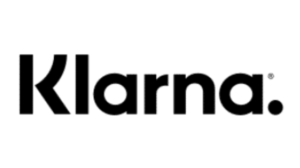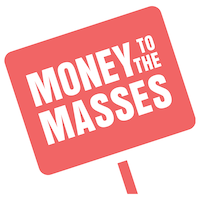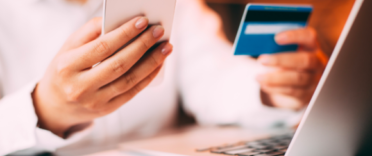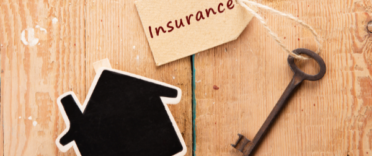Klarna is at the forefront of "buy-now, pay-later" and is the current market leader in the UK. It offers point-of-sale credit to consumers, allowing them to spread the cost of purchases. For most of its services, the short-term debt is interest free. It also has a longer-term Klarna Financing option, which is more akin to a standard credit card and allows buyers to pay in instalments over 6-36 months, although interest is payable (representative APR 18.9% variable) and it necessitates a full credit check.
Klarna stands out from its competitors due to its slick marketing, easy-to-use app and market share - if you shop online, it is very likely you will have encountered it as an option at checkout for many of the retailers you use. It positions itself as a 'safe' option and claims that using its services won't damage your credit rating and that you won't be charged fees, even if you are late making payments. However, as we will discuss later in this review, users do still need to exercise caution when using any buy-now-pay-later provider, Klarna included.
How does Klarna work?
Klarna works in partnership with more than 15,000 merchants in the UK to provide customers with the option to pay for goods or services in instalments rather than upfront. It offers this service for free to the end-consumer and makes its money from the retailers by charging a percentage of every sale made using its service.
As Klarna has grown, it has increased the number of options available to customers. These include:
Klarna Pay in 3
Best for: Those wanting to budget for slightly more expensive purchases that they can't afford to pay for upfront
Payment schedule: The total cost is split into three equal instalments, the first taken at the point-of-purchase and the following two payments taken after 30 days and 60 days
Application process: At the checkout, customers provide their name, address and credit or debit card details. Klarna performs a soft search on the customer's credit file and gives an instant decision on whether they have been accepted for the service and what their maximum credit limit is
When is money taken? The first payment is taken when the retailer confirms the product has been shipped. The following two instalments are taken automatically using the card details provided at checkout after 30 calendar days and then, finally, at 60 calendar days. A reminder is sent a few days before each payment is taken
Is there a late fee? Yes, a late fee of £5 may be charged if a payment is missed and remains unpaid after the 14-day grace period. A further £5 may be charged for further late payment and total late fees are capped at £10 or 25% of the order value.
Klarna Pay in 30 days
Best for: Those who may want to buy several items to try, with the option of only paying for what you end of keeping, without tying up funds in the meantime
Payment schedule: You will be liable to pay for any items that haven't been returned after 30 days. You do not have to pay anything upfront and you can make payments at any time during the 30-day period.
Application process: You do not need to provide your credit or debit card details at checkout to make the purchase, but you will need to give your name and address to facilitate the soft credit check. Again, you will be told whether you have been accepted almost instantly. It is then your responsibility to make payment direct to Klarna within 30 days
When is money taken? The payment window opens from the point that the order is shipped
Is there a late fee? Yes, a late fee of £5 may be charged if a payment is missed and remains unpaid after the 7-day grace period. A further £5 may be charged for further late payment and total late fees are capped at £10 or 25% of the order value.
Klarna card
Best for: Those who want a physical Visa card to make purchases with, which can then be paid for either immediately or within 30 days.
Payment schedule: Once you have made a purchase, you will be sent an invoice, which must be paid within 30 days. The Klarna card is free, with no monthly charge.
Application process: You can apply for the card through the Klarna app or online account. To be approved you need to be over 18, a UK resident and have a good credit history.
When is the money taken? The invoice is payable within 30 days.
Klarna One-time card
Best for: Using at stores or shops that aren't partnered with Klarna. It is a single-use "card" that is stored on the Klarna app and is linked to your normal debit or credit card. You can use the card when you make purchases through the app or, alternatively, you can set up a One-time card in advance of making your purchase through your Klarna account.
Payment schedule: The idea is you set up the One-time card with the total amount you plan to spend on the purchase, including shipping costs. You also establish the payment plan you wish to follow. If you don't end up using the total amount added to the card, you can request a refund for the additional money.
Application process: You can apply through the Klarna app or through your Klarna account. The card can only be used once and, if unused, will expire after 24 hours.
When is money taken? The card is linked to your debit or credit card and money will be taken in line with the payment plan you have chosen for the specific purchase.
Klarna Financing
Best for: Making larger, more expensive purchases that require a longer period to pay off
Payment schedule: In much the same way as with other lines of credit, you have the option at the point of purchase to choose the terms of the financing, with a payment term of between 6-36 months. You will be informed at this stage how much interest will be payable on the loan
Application process: As this is a longer-term credit product, customers have to complete a full application form and a hard credit check will be performed, which will feature on their credit report. Customers will be informed if they have been accepted within a few minutes and they won't have to undergo the same application process again for subsequent purchases
When is money taken? Customers can set up automatic monthly payments or make manual payments at any point during the payment period
What happens if I miss a payment on Klarna?
Klarna has announced that it will introduce late fees from 16th March 2023. Customers will be given a grace period of seven days for its 'Pay in 30 product and 14 days for its Pay in 3' product, after which a late fee of £5 will be charged. Klarna will charge a maximum of two late fees per customer order up to a maximum of 25% of the purchase value. BNPL firms Clearpay, Laybuy and Paypal charge between £6-£12 for every late payment. While previously Klarna didn't report usage to credit reference agencies, it has been visible on credit reports from TransUnion and Experian since 1st June 2022. If you persistently don't pay over a period of time, in spite of repeated communication from Klarna, the debt is likely to be passed on to a debt collection agency.
Another impact of not making your payments on time is the possibility of being banned from using Klarna's services in the future. Indeed, your line of credit is directly affected by the way you use Klarna, with your credit limit increasing gradually as you build up a borrowing history with the company.
How easy is it to use Klarna?
In terms of the application process, Klarna is designed to be simple and straightforward, with minimal steps to take you from the checkout to setting up a payment plan. Some may argue that the process is a little too efficient, with buyers able to enter into what is, in practice, a short-term credit arrangement without giving enough thought to whether it is right for them.
Klarna also has an app, which allows users to manage their accounts from their mobiles, keeping track of payments, notifying Klarna of returns and refunds and reporting any problems. It is also designed to give personalised suggestions for brands and retailers that might be of interest, as well as offering exclusive discounts and offers.
Is Klarna safe?
Putting aside the issue of taking on unnecessary additional debt, Klarna is safe in the way it takes payments and stores customers' details. It has built its reputation on posing no risk to customers in terms of levying hidden fees or damaging credit reports and, indeed, can increase safety by allowing customers to just sign up to a Klarna account rather than having to provide their details to numerous online retailers.
However, a key criticism of Klarna - and other buy-now-pay-later providers - is the fact that, by using it as a third party to make purchases, customers forego their consumer rights under Section 75 of the Consumer Credit Act. This means that, even if they use their credit card to make payment for an item or service over £100, they are not protected by law if it is faulty, not as described, not delivered or if the retailer goes bust. While Klarna has its own Buyers' Protection Policy, which is pretty comprehensive, it is still a company policy rather than being enshrined in law. For more information, read our article "Section 75 of the Consumer Credit Act explained - your rights and how to claim"
Should I use Klarna?
On the one hand, Klarna is a low-risk, interest-free way of accessing short-term credit, with a number of options to suit different situations. It is particularly useful if you are buying clothes or shoes in a few different sizes to try on at home as it allows you to do this but only pay for the items you keep. This is great for people who don't want a large chunk of money tied up while they wait for a refund to be issued.
On the other hand, debt charities have been critical of the buy-now-pay-later culture and the fact people are falling into debt as a result of a number of small, impulse purchases. Buy-now-pay-later encourages people to accrue debt that they might not be able to service in the future, even if it is just a month or two further down the line, particularly if their financial situation changes.
When compared with other buy-now-pay-later providers, it is easy to see why Klarna has captured the market. It is important for consumers to keep in mind though that, however accessible it is, this type of debt is not free money and requires careful consideration.
Alternatives to Klarna
Klarna vs Clearpay
Clearpay works in much the same way as Klarna, although it has fewer repayment options, with all purchases broken down into 4 instalments, with the first made at the point of sale and the remainder paid over 6 weeks. Clearpay charges a late fee for missed payments, with an initial penalty of £6, which is followed by another £6 after 7 days if the debt is still outstanding. Klarna charges £5 per late fee with a maximum of two late fees charged per customer order. Like Klarna, It caps late payments at 25% of the total purchase price.
Klarna vs PayPal Pay in 3
PayPal Pay in 3, as the name suggests, allows shoppers to split payments into 3 instalments, the same as for Klarna's Pay in 3 proposition. PayPal does not charge late fees for Pay in 3, although late or missed payments will be reported to credit reference agencies and could impact your credit rating.
Klarna vs Monzo Flex
Monzo Flex differs from Klarna in the way it allows users to opt to move purchases from the previous 2 weeks into a payment plan that allow them to pay in instalments. This means you have more flexibility to manage your finances without having to decide at the point of purchase. There is the option to pay in 3 instalments interest free or to pay over 6 or 12 instalments with an interest rate of 19% APR. Klarna, meanwhile, allows you to pay after 30 days, in 3 instalments or, via Klarna Financing, in payments over up to 36 months, although, like Monzo Flex, these attract interest of up to 18.99% APR.
Klarna vs credit card
A fundamental difference between using Klarna or, indeed, any buy-now, pay-later provider compared with a credit card is the fact you won't get section 75 protection with buy-now, pay-later. If you use a credit card, you automatically have protection under the Consumer Credit Act on all purchases between £100 and £30,000. This means if the item is faulty, not as described or the company goes bust, you will get your money back. Although buy-now, pay-later generally have their own buyer protection, it isn't enshrined in law in the same way as with a credit card.
However, the appeal of using Klarna as opposed to a credit card is the fact it is usually interest free. Unless you have a credit card with a good 0% interest deal, it will usually work out cheaper to opt for buy-now, pay-later.
To find out about buy-now-pay-later, read our article "Everything you need to know about buy-now-pay-later"
If a link has an * beside it this means that it is an affiliated link. If you go via the link Money to the Masses may receive a small fee which helps keep Money to the Masses free to use. But as you can clearly see this has in no way influenced this independent and balanced review of the product.








